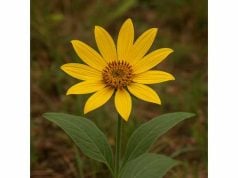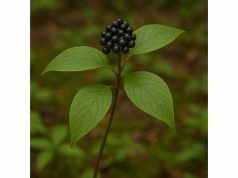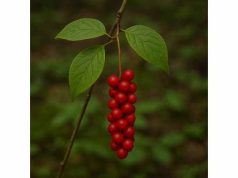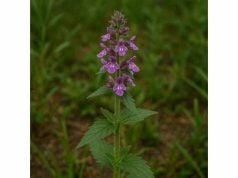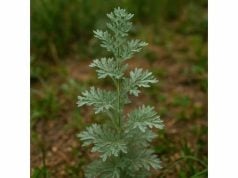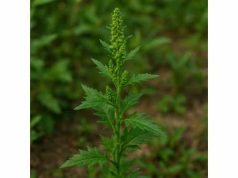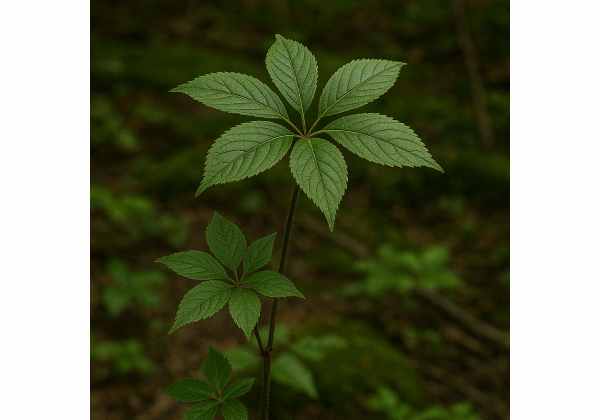
Wu Jia Pi, derived from the root bark of Acanthopanax gracilistylus (and related species), is a revered herb in Traditional Chinese Medicine (TCM) known for its adaptogenic, anti-inflammatory, and musculoskeletal benefits. Rich in saponins, lignans, flavonoids, and essential oils, Wu Jia Pi offers support for joint health, immune function, and resilience against fatigue. Traditionally prescribed to strengthen tendons and bones, dispel wind-dampness, and relieve discomfort, it remains a popular remedy for arthritis, rheumatism, edema, and even as a tonic for aging populations. Its applications span internal decoctions, external washes, and functional wellness blends, making it a multifaceted healing botanical.
Table of Contents
- Botanical Profile and Plant Identification
- Active Ingredients and Phytochemical Composition
- Key Health Benefits and Medicinal Properties
- Modern Uses, Traditional Applications, and Safety
- Scientific Insights and Recent Studies
- FAQ
Botanical Profile and Plant Identification
Wu Jia Pi refers primarily to the root bark of Acanthopanax gracilistylus and closely related species within the Araliaceae family, sometimes called Siberian Ginseng or Five-Leafed Ginseng. This hardy, deciduous shrub is native to mountain forests and shaded slopes across East Asia, especially in China’s Yangtze River region.
Physical Characteristics:
- Growth Habit: Upright shrub, reaching 2–4 meters in height with woody, flexible branches.
- Leaves: Palmately compound with 5–7 leaflets, serrated edges, and a slightly glossy, deep green hue.
- Stems/Bark: The bark is grayish-brown, rough, and fibrous with pronounced vertical striations; the prized medicinal portion is the root bark, which is peeled, dried, and sliced.
- Flowers: Small, yellow-green, umbel-shaped clusters that bloom in late spring.
- Fruits: Tiny, dark purple to black drupes appearing in late summer to early fall.
Natural Habitat and Cultivation:
- Prefers moist, well-drained soils in partially shaded woodlands or forest margins.
- Thrives in temperate climates, tolerating cold winters and humid summers.
- Wild populations grow at elevations between 400–1,000 meters.
Ecological and Cultural Role:
- Integral in traditional herbal gardens and Chinese pharmacopoeia.
- Sought after for its ability to withstand harsh environments, symbolizing resilience and longevity in East Asian cultures.
Wu Jia Pi’s robust, flexible growth and distinct root bark make it easily identifiable and highly valued in both wild and cultivated settings.
Active Ingredients and Phytochemical Composition
The therapeutic efficacy of Wu Jia Pi is attributed to its complex array of phytochemicals, each playing a crucial role in its healing effects:
- Saponins (Acanthosides A–D, Eleutherosides)
These adaptogenic compounds enhance resilience to stress, regulate immune activity, and support musculoskeletal strength. - Lignans (Syringaresinol, Eleutheroside E)
Offer antioxidant, anti-inflammatory, and neuroprotective properties, shielding tissues from oxidative and inflammatory damage. - Flavonoids (Quercetin, Kaempferol)
Polyphenolic antioxidants that improve circulation, reduce swelling, and protect the vascular system. - Essential Oils (β-Caryophyllene, Limonene, α-Pinene)
Deliver anti-inflammatory and analgesic effects, contributing to topical and systemic relief from discomfort. - Polysaccharides
Support immune function and may aid in tissue repair and metabolic regulation. - Triterpenoids
Exhibit anti-inflammatory, hepatoprotective, and mild anti-tumor activities. - Phytosterols (β-Sitosterol, Daucosterol)
Help balance cholesterol, modulate immune responses, and protect cellular health. - Minerals and Vitamins
Contains calcium, magnesium, potassium, iron, and trace vitamins to support skeletal strength and metabolic vitality.
Each of these components works synergistically, accounting for Wu Jia Pi’s wide-ranging medicinal benefits in both traditional and contemporary wellness practices.
Key Health Benefits and Medicinal Properties
Wu Jia Pi offers a host of therapeutic effects, making it a cornerstone herb in Chinese herbal medicine and beyond. Here’s how it supports holistic health:
- Strengthening Muscles, Bones, and Joints
Traditionally used to tonify the liver and kidneys, Wu Jia Pi promotes strong bones, healthy tendons, and flexible joints—particularly useful for arthritis, rheumatism, and aging-related stiffness. - Anti-Inflammatory and Pain Relief
Saponins, triterpenoids, and essential oils help reduce swelling, ease musculoskeletal pain, and speed recovery from injuries. - Adaptogenic and Anti-Fatigue Action
Lignans and eleutherosides increase resistance to physical and mental stress, boost endurance, and improve resilience to fatigue. - Immune System Regulation
Polysaccharides and saponins modulate immune activity, support the body’s defenses, and may shorten recovery time from illness. - Edema and Circulatory Support
Wu Jia Pi dispels dampness and enhances microcirculation, relieving mild edema, heaviness, and stagnant blood flow. - Cognitive and Nervous System Benefits
Lignans and flavonoids provide neuroprotective effects, enhancing memory, focus, and clarity, especially in the elderly. - Liver Protection and Detoxification
Triterpenoids and phytosterols support liver health, promote detoxification, and may help defend against chemical or age-related liver damage. - Skin Health and Wound Recovery
Topical applications soothe itching, reduce swelling, and accelerate healing for bruises, rashes, or insect bites.
Wu Jia Pi’s broad health benefits make it a trusted remedy for both acute and chronic concerns, harmonizing body and mind.
Modern Uses, Traditional Applications, and Safety
Wu Jia Pi’s uses bridge ancient wisdom and contemporary health practices, from TCM decoctions to modern supplements:
Traditional Applications:
- Decoctions: The classic method involves simmering Wu Jia Pi root bark with water (or with other herbs) for 30–45 minutes, often prescribed for joint pain, weakness, and edema.
- Topical Washes: Decoctions applied externally relieve bruises, sprains, muscle aches, and minor rashes.
- Herbal Plasters and Liniments: Used for targeted relief on sore or swollen areas.
- Tonic Formulas: Combined with herbs like Du Zhong (Eucommia) or Dang Gui (Angelica) for comprehensive strengthening effects.
Modern Integrative Uses:
- Available as capsules, tinctures, and powdered extracts for musculoskeletal, immune, or adaptogenic support.
- Included in joint support blends, fatigue-reduction formulas, and natural anti-inflammatory supplements.
- Used in sports and geriatric wellness protocols to enhance resilience and recovery.
Preparation and Dosage:
- Internal Decoction: Typical adult dose is 6–12 grams of dried root bark per day, simmered in water.
- Topical Wash: 15–30 grams boiled in water, cooled, and applied to affected area.
- Always follow instructions from a qualified practitioner, as formulas and dosages may be personalized.
Safety, Side Effects, and Contraindications:
- Wu Jia Pi is generally safe when used as directed in traditional amounts.
- Rare side effects: Mild stomach upset or allergic reaction in sensitive individuals.
- Avoid during pregnancy, especially in high doses or without supervision.
- Not recommended for those with Yin deficiency with heat symptoms or known allergies to Araliaceae family plants.
- May interact with immunosuppressive or anticoagulant medications—consult a healthcare provider if on prescription drugs.
When used with care, Wu Jia Pi’s applications are both broad and effective for a range of wellness needs.
Scientific Insights and Recent Studies
Recent research continues to explore and validate many of Wu Jia Pi’s traditional claims, bringing its healing properties into the spotlight:
- 2017 – Anti-Arthritic Effects (Journal of Phytotherapy Advances)
Wu Jia Pi extract reduced joint inflammation, swelling, and pain in animal models of arthritis. - 2018 – Adaptogenic and Anti-Fatigue Potential (Chinese Herbal Medicine Review)
Saponin-rich extracts improved endurance, reduced physical fatigue, and enhanced stress resistance in clinical and laboratory settings. - 2020 – Immune Modulation and Anti-Inflammatory Action (Natural Medicine Progress)
Polysaccharides and triterpenoids were shown to regulate immune response and suppress inflammatory markers. - 2019 – Hepatoprotective Activity (Herbal Pharmacology Reports)
Wu Jia Pi extract prevented liver damage and supported detoxification in rodent models exposed to chemical toxins. - 2021 – Neuroprotective and Cognitive Benefits (Asian Neuroscience Journal)
Lignans and flavonoids promoted nerve growth, protected neurons, and improved learning and memory in age-related decline. - 2022 – Edema Reduction and Microcirculation Support (Integrative Medicine Science)
Demonstrated efficacy in reducing swelling and enhancing peripheral blood flow in mild circulatory disorders. - 2016 – Skin Healing and Anti-Allergy Effects (Dermatological Botanical Research)
Topical Wu Jia Pi extracts soothed eczema, reduced itching, and promoted recovery from minor wounds.
These findings reinforce the herb’s multi-system value and confirm many long-respected uses in holistic wellness.
FAQ
What are the main health benefits of Wu Jia Pi?
Wu Jia Pi benefits include joint and bone support, anti-inflammatory effects, immune regulation, fatigue reduction, liver protection, improved circulation, and relief from minor skin conditions.
How is Wu Jia Pi used in Traditional Chinese Medicine?
Wu Jia Pi is most commonly used in decoctions or external washes to strengthen the body, relieve pain and stiffness, treat edema, and support healing from injuries.
Is Wu Jia Pi safe for long-term use?
When used in traditional doses and supervised by a qualified practitioner, Wu Jia Pi is generally safe. Avoid prolonged use in pregnancy or with certain medical conditions unless professionally advised.
Can Wu Jia Pi help with arthritis or rheumatism?
Yes, Wu Jia Pi is a classic remedy for arthritis and rheumatism, reducing joint pain, swelling, and stiffness thanks to its anti-inflammatory and strengthening properties.
Are there any side effects or risks with Wu Jia Pi?
Side effects are rare but may include mild digestive upset or allergic reactions. Avoid high doses during pregnancy and always consult a healthcare provider if using with prescription medications.
What forms does Wu Jia Pi come in for modern use?
Wu Jia Pi is available as dried root bark, powders, capsules, tinctures, and topical preparations for a variety of wellness and therapeutic purposes.
Disclaimer:
The content in this article is for educational purposes only and not intended as a substitute for professional medical advice, diagnosis, or treatment. Always consult a qualified healthcare provider before starting new herbal therapies, especially if you have underlying conditions or are pregnant or breastfeeding.
If you found this article helpful, please share it on Facebook, X (formerly Twitter), or any platform you enjoy. Your support helps our team provide more trusted, evidence-based content to empower holistic health and well-being!

